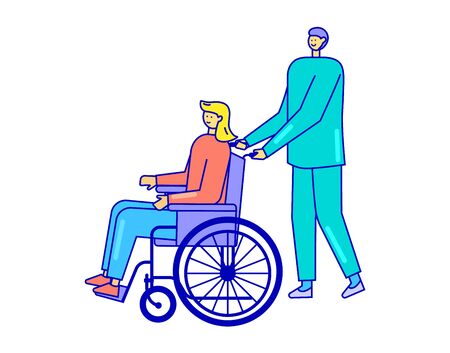Introduction to Cerebral Palsy in the UK
Cerebral palsy (CP) is one of the most common childhood disabilities in the United Kingdom, affecting thousands of families nationwide. It refers to a group of permanent movement disorders that appear in early childhood, impacting muscle tone, coordination, and posture. In the UK, it is estimated that around 1 in every 400 children is diagnosed with cerebral palsy, making it a significant concern for both medical professionals and the wider community. Understanding cerebral palsy is essential not only for those directly affected but also for teachers, carers, and neighbours who play a role in supporting inclusion and wellbeing. Awareness enables British families to access timely support, advocate effectively for their children’s needs within the NHS and educational settings, and help foster a more inclusive society. By increasing understanding and sharing experiences, communities across the UK can work together to ensure that every child with cerebral palsy has the opportunity to reach their full potential.
2. Causes and Risk Factors
Cerebral palsy (CP) is a complex condition, and its causes can be both medical and social. In the UK, healthcare professionals often encounter a range of factors that contribute to the risk of CP in children. Understanding these factors is vital for both prevention and early intervention.
Medical Causes
The primary causes of cerebral palsy are related to abnormal brain development or injury to the developing brain, most often before birth. These can include:
- Premature birth: Babies born prematurely are at higher risk because their brains are more vulnerable.
- Lack of oxygen (hypoxia): Complications during birth that reduce oxygen supply to the baby’s brain can result in CP.
- Infections during pregnancy: Maternal infections such as rubella, cytomegalovirus, or toxoplasmosis can affect brain development.
- Bleeding in the brain (intracranial haemorrhage): This is more common in very premature infants.
Social and Environmental Risk Factors
While medical causes are central, social circumstances also play a role in the likelihood of developing cerebral palsy. UK healthcare experiences highlight some key factors:
- Poor access to antenatal care: Families facing socio-economic challenges may have less consistent access to NHS services, increasing risk.
- Lifestyle factors: Smoking, alcohol use, and drug misuse during pregnancy can elevate the chances of complications leading to CP.
- Environmental hazards: Exposure to toxins or infectious agents in the community can pose additional risks.
Summary Table: Common Causes and Risk Factors in UK Context
| Category | Examples |
|---|---|
| Medical | Premature birth, hypoxia, maternal infection, intracranial haemorrhage |
| Social/Environmental | Poor antenatal care, lifestyle choices, exposure to toxins/infections |
A Practical Perspective from UK Healthcare
NHS guidelines stress the importance of regular check-ups and early identification of high-risk pregnancies. Parents are encouraged to attend all antenatal appointments and seek advice if they notice anything unusual during pregnancy. Community midwives often share real-life stories about how timely intervention—such as managing high blood pressure or treating infections—has made a significant difference for families across the UK. By understanding both medical and social risk factors, parents and professionals can work together to lower the incidence of cerebral palsy among British children.

3. Types of Cerebral Palsy
When it comes to cerebral palsy, UK clinicians usually group it into a few main types, making it easier for parents and carers to understand what their child is facing. Here’s a straightforward guide to the most common forms you might hear about in British healthcare settings.
Spastic Cerebral Palsy
This is by far the most common type seen in children across the UK. “Spastic” refers to stiffness or tightness in the muscles, which can make everyday movements tricky. For example, you might notice a child struggling with tasks like tying shoe laces or holding a pencil at school. It can affect different parts of the body: sometimes just the legs (spastic diplegia), one side (hemiplegia), or all four limbs (quadriplegia).
Dyskinetic (or Athetoid) Cerebral Palsy
This type involves involuntary movements, meaning a child might have trouble controlling their hands, feet, arms, or even facial muscles. You might spot this when a youngster finds eating or speaking more difficult, perhaps needing extra help at mealtimes or in the classroom during group activities.
Ataxic Cerebral Palsy
Ataxic CP affects balance and coordination. Children might walk with an unsteady gait or struggle with tasks requiring precise hand control – think about trying to write neatly in a school exercise book or pouring squash into a glass without spilling. This type is less common but still recognised by paediatric specialists throughout the NHS.
Mixed Type Cerebral Palsy
Some children have symptoms that don’t fit neatly into one category – they might show signs of both spasticity and involuntary movements, for example. Clinicians call this ‘mixed’ cerebral palsy. It’s not unusual for families in the UK to hear this term if their child’s presentation is a bit more complex.
Why Knowing the Type Matters
Understanding these types helps doctors, teachers, and families work together on tailored support plans – from physiotherapy at local NHS clinics to extra help at mainstream schools. Each type comes with its own challenges and strengths, but early recognition means children get the right help sooner, giving them the best possible start here in Britain.
4. Recognising Signs and Symptoms
Spotting the early signs of cerebral palsy in children can make a significant difference in how soon support and interventions are put in place. For British parents and teachers, understanding what to look for in everyday settings—whether at home, nursery, or school—is crucial. Early detection can lead to improved outcomes for children with cerebral palsy, allowing them to access the right resources and services within the UK education and healthcare systems.
Common Early Indicators in Everyday Settings
Cerebral palsy can present differently from child to child, but there are some typical signs that may be observed during daily routines or play. It’s important not to panic if you notice one or two of these indicators; however, consistent patterns are worth discussing with your GP or health visitor.
| Age Group | Signs at Home | Signs in Nursery/School |
|---|---|---|
| Infants (0-12 months) | Poor head control, stiff or floppy limbs, delayed rolling over or sitting up | Difficulty holding toys, limited movement on one side of the body |
| Toddlers (1-3 years) | Dragging one leg when crawling, unable to stand without support, walking on tiptoes | Trouble joining group activities that require movement, frequent falls |
| Preschool & Primary (3+ years) | Difficulty dressing themselves, struggles with fine motor tasks like using cutlery | Poor balance during PE, challenges with writing or drawing compared to peers |
What Teachers and Staff Should Watch For
In a British classroom setting, teachers often notice subtle differences before parents do. Look out for:
- Pupils who tire quickly during physical activities such as PE or playtime on the playground.
- A child consistently using only one hand for tasks like colouring or eating.
- Difficulties with speech clarity or following instructions.
- Challenges with coordination – e.g., dropping items frequently or trouble climbing stairs.
Practical Steps for Parents and Teachers
If you’re concerned about a child’s development:
- Record observations with dates and specific examples – this will help when speaking to health professionals.
- Raise concerns early with your GP, health visitor, SENCO (Special Educational Needs Coordinator), or school nurse.
- Remember: Early intervention is valued in the UK system. Accessing services like physiotherapy or speech therapy is often easier with a prompt referral.
The journey can feel daunting at first, but many British families have walked this path before you. Sharing concerns openly and seeking guidance early on helps ensure that children receive the support they need to thrive both academically and socially.
5. Diagnosis Pathways in the NHS
When parents in the UK first notice signs that their child may not be meeting developmental milestones, the journey into the NHS diagnostic pathway for cerebral palsy often begins with a visit to the GP or health visitor. This initial contact is crucial, as early recognition can make a significant difference to outcomes and support. Families are usually referred to a community paediatrician, who specialises in childhood conditions and development.
Typical Assessments and Referrals
The paediatrician will carry out a thorough developmental assessment, often including questions about pregnancy, birth history, and early motor skills. Observation of how the child moves, sits, crawls, or walks forms a key part of this stage. Depending on findings, further referrals may be made for specialist input—such as physiotherapists, occupational therapists, and speech and language therapists—who each assess specific aspects of the child’s abilities.
Investigations and Confirming the Diagnosis
If cerebral palsy is suspected, neuroimaging (like MRI scans) might be arranged to look for any brain abnormalities. Sometimes blood tests or genetic investigations are necessary to rule out other conditions. The process can feel long and at times overwhelming, but every step is designed to build a complete picture so that children receive the right support from an early stage.
Family Experiences Within the NHS System
Navigating these pathways can be an emotional rollercoaster for families. Many parents speak of relief when finally getting answers, but also frustration at waiting times or lack of clear communication between services. However, once a diagnosis is confirmed, most families find that being linked into local NHS multidisciplinary teams offers invaluable practical advice and emotional support. The British approach emphasises collaborative care—families are encouraged to voice their concerns and preferences throughout the process.
In summary, while each diagnosis journey is unique, understanding what to expect within the NHS can empower families. Seeking help early and staying engaged with healthcare professionals ensures children with cerebral palsy in the UK receive comprehensive assessment and ongoing care tailored to their needs.
6. Living with Cerebral Palsy: Support and Next Steps
Living with cerebral palsy (CP) in the UK is a journey filled with both challenges and opportunities for growth. Every child’s experience is unique, but one thing remains constant: navigating life with CP requires resilience, adaptability, and a strong support network. It’s not just about medical care—it’s about embracing life, finding the right resources, and creating a positive environment for children and their families.
An Honest Look at Everyday Life
For many UK families, daily life with cerebral palsy means adapting routines to meet their child’s needs—whether that involves mobility aids, communication tools, or tailored educational plans. Simple activities like attending school or going out with friends might require extra planning. There can be frustrations, especially when facing physical barriers or misunderstanding from others. However, many families share stories of overcoming obstacles and celebrating small victories that matter deeply.
Support from Local Authorities and the NHS
The UK offers a robust network of support for children with CP. Local authorities are responsible for providing Education, Health and Care Plans (EHCPs), ensuring children get appropriate educational support tailored to their abilities. The NHS offers multi-disciplinary teams—including physiotherapists, occupational therapists, speech therapists, and paediatricians—who work together to provide personalised care. Accessing these services usually starts with your GP or paediatrician who can guide you through referrals and assessments.
Community Organisations: Real-Life Connections
Beyond official channels, numerous community organisations across the UK provide invaluable help. Charities such as Scope, Cerebral Palsy UK, and Contact a Family offer information, local events, advocacy, peer-to-peer support groups, and sometimes even financial grants. These organisations are often run by people who have walked the same path, offering practical advice and emotional understanding that only comes from lived experience.
Building an Inclusive Future
Living with cerebral palsy isn’t just about managing symptoms—it’s about empowering children to participate fully in society. Many schools across the UK strive to become more inclusive, adapting classrooms and curricula to welcome all learners. Sports clubs and creative arts programmes are increasingly accessible too, helping children build confidence and friendships outside the home.
Next Steps: Taking Action Together
If your child has recently been diagnosed with cerebral palsy—or if you’re supporting someone on this journey—know that you’re not alone. Connect with your local authority for EHCP assessments early on. Reach out to charities for guidance and community events. Don’t hesitate to ask health professionals about therapies or assistive technologies that could improve daily life. Most importantly, celebrate your child’s achievements—no matter how small—and keep advocating for a more inclusive UK where every child can thrive.


